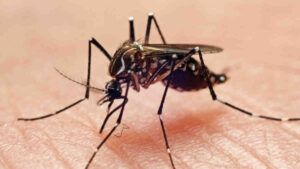This ‘Fitbit for the face’ can turn any face mask into a smart monitoring device

Pic: Getty
Engineers at Northwestern University have developed a new smart sensor platform for face masks dubbed a “Fitbit for the face” or “FaceBit”.
It’s a lightweight, coin-sized sensor that uses a tiny magnet to attach to any N95, cloth or surgical face mask – and it can sense the user’s respiration rate, heart rate and mask wear time.
The info is wirelessly transmitted to a smartphone app to monitor health in real-time.
Plus, the app can alert the user to issues around elevated heart rates or mask leaks, and potentially predict fatigue.
We could all be looking like Bane without the muscles in no time.
Battery that use breath for energy
“We wanted to design an intelligent face mask for healthcare professionals that does not need to be inconveniently plugged in during the middle of a shift,” said Northwestern’s Josiah Hester, who led the device development.
“We augmented the battery’s energy with energy harvesting from various sources, which means that you can wear the mask for a week or two without having to charge or replace the battery.”
The battery can even harvest energy from the force of the user’s breathing, motion and heat from breath – as well as from the sun.
Currently the wearer’s breathing and movements or the sun can extend the battery’s life, but Hester hopes that in future harvested thermal and kinetic energy could solely power the device – making it completely battery free.
Monitoring heart and respiration in stressful situations
According to Hester, every time a person’s heart beats, their head moves an imperceptibly tiny amount. FaceBit can sense that subtle motion — and differentiate it from other motions — in order to calculate heart rate.
“Your heart is pushing a lot of blood through the body, and the ballistic force is quite strong,” he said.
“We were able to sense that force as the blood travels up a major artery to the face.”
And because stressful events can elicit physiological responses like rapid breathing, FaceBit can use that information to alert the user to take a break, go for a walk or take some deep breaths to calm down.
Hester said hospital systems also could use this data to optimise shift and break schedules for its workers – and because heart rate and respiration rate are so tightly entangled with each other, having the ability to effortlessly monitor both could open new research possibilities.
Open source and hardware for all
The next step is for clinical trials, but Hester’s team released the project as open source and open hardware so that others can build and validate the device.
“FaceBit provides a first step toward practical on-face sensing and inference, and provides a sustainable, convenient, comfortable option for general health monitoring for COVID-19 frontline workers and beyond,” Hester said.
“I’m really excited to hand this off to the research community to see what they can do with it.”
Related Topics

UNLOCK INSIGHTS
Discover the untold stories of emerging ASX stocks.
Daily news and expert analysis, it's free to subscribe.
By proceeding, you confirm you understand that we handle personal information in accordance with our Privacy Policy.








